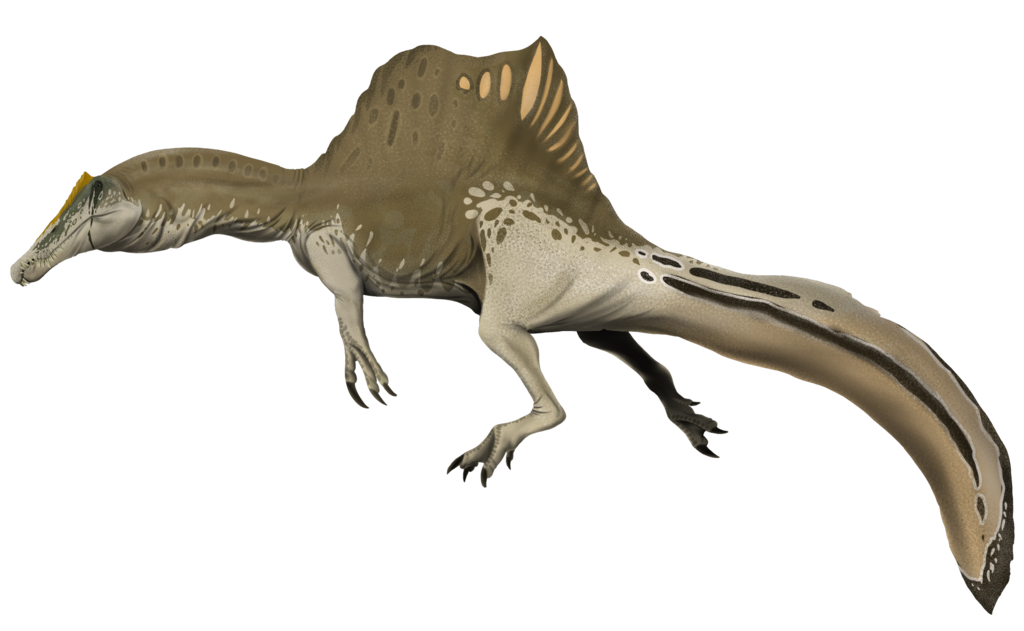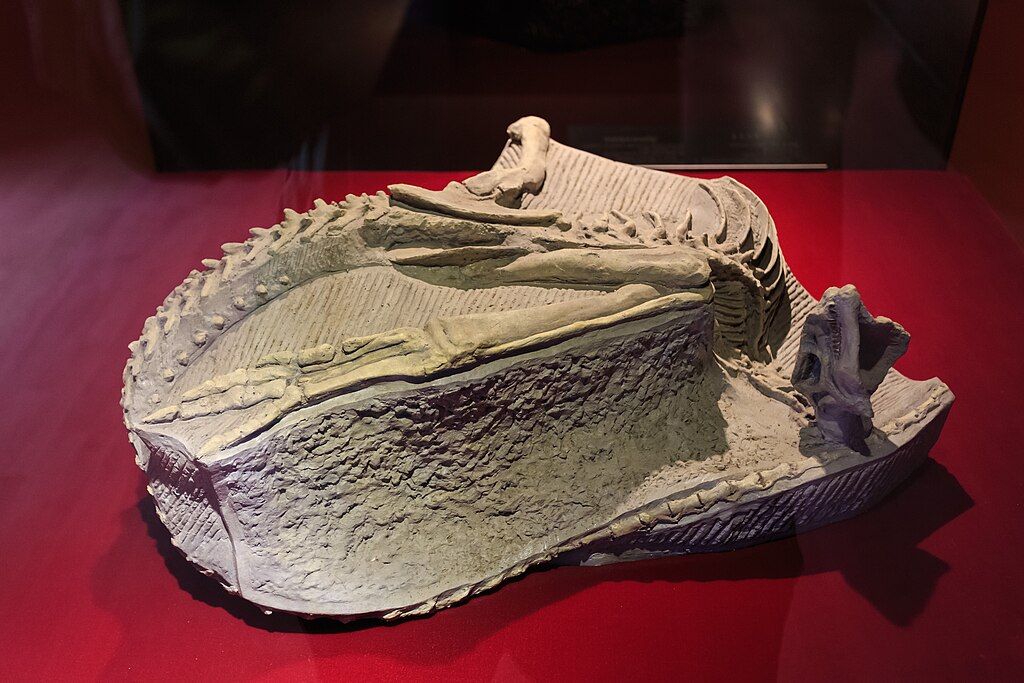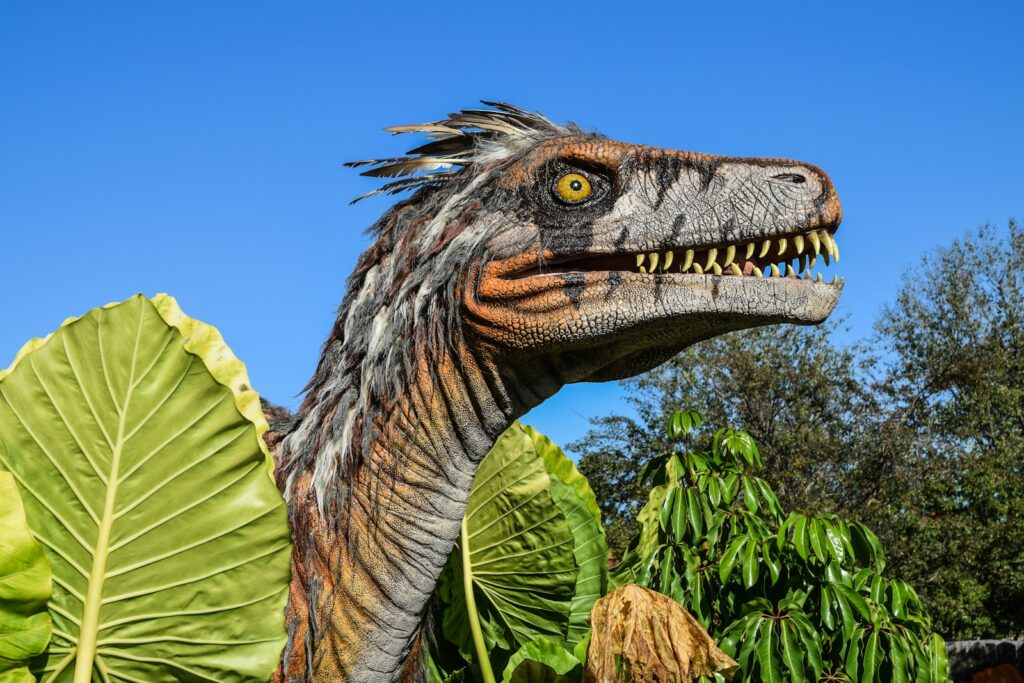Dinosaurs, the magnificent creatures that dominated Earth for over 160 million years, have captivated our imagination largely due to their extraordinary size. From the towering Brachiosaurus to the massive Argentinosaurus, these prehistoric giants evolved dimensions that far exceed most modern land animals. But what evolutionary pressures and environmental factors allowed—or perhaps encouraged—dinosaurs to reach such colossal proportions? This article explores the leading scientific theories behind dinosaur gigantism, offering insights into one of paleontology’s most fascinating questions.
The Oxygen-Rich Mesozoic Atmosphere

One compelling theory for dinosaur gigantism points to the atmospheric composition during the Mesozoic Era. Research suggests that oxygen levels during parts of the dinosaur age were significantly higher than today, potentially reaching up to 30% compared to our current 21%. This oxygen-rich environment may have supported larger bodies by enabling more efficient respiration and metabolism. Higher oxygen concentrations would have allowed dinosaurs to extract more energy from their food and distribute it more effectively throughout their massive bodies. This atmospheric advantage could explain how giant sauropods maintained their enormous body mass and powered their metabolic needs despite having relatively small heads and mouths compared to their overall size. Additionally, laboratory experiments with insects have demonstrated that higher oxygen levels can indeed lead to larger body sizes, lending support to this theory for vertebrates as well.
Avian Respiratory System Advantages

The unique respiratory system of dinosaurs may have been a crucial factor enabling their gigantic proportions. Paleontological evidence suggests that dinosaurs possessed an avian-style respiratory system with air sacs, similar to modern birds, rather than the simpler lungs of mammals. This highly efficient oxygen-processing system creates a one-way flow of air through the lungs, allowing for continuous oxygen absorption rather than the in-and-out breathing pattern of mammals. The presence of pneumatic features (air spaces) in dinosaur bones, particularly in sauropods, provides strong evidence for this respiratory adaptation. This system would have given dinosaurs superior oxygen uptake capability, supporting their massive size by meeting their enormous metabolic demands. Furthermore, the air sacs and hollow bones would have reduced overall body weight while maintaining structural integrity, essentially creating a biological weight-reduction system that allowed for larger overall dimensions without proportional increases in mass.
The Gigantothermy Hypothesis

Gigantothermy—the ability to maintain a stable body temperature through sheer size—represents another significant advantage that may have driven dinosaur gigantism. Large bodies have lower surface-area-to-volume ratios, which means they lose heat more slowly and maintain more stable internal temperatures. This phenomenon, also called inertial homeothermy, would have provided dinosaurs with metabolic advantages in maintaining optimal body temperatures without the high energy costs associated with true endothermy (warm-bloodedness). For sauropods and other giants, this thermal inertia would have allowed them to absorb heat during the day and release it slowly overnight, keeping their massive bodies within functional temperature ranges. Research suggests that a Brachiosaurus-sized animal could maintain a nearly constant body temperature despite environmental fluctuations, providing significant metabolic efficiency. This thermal stability would have been particularly advantageous in the variable climates of the Mesozoic, allowing dinosaurs to exploit ecological niches unavailable to smaller animals.
The Abundant Plant Resources Theory

The Mesozoic Era witnessed a revolutionary expansion of plant life that may have directly contributed to dinosaur gigantism, particularly among herbivorous species. The evolution and diversification of gymnosperms (cone-bearing plants) and later angiosperms (flowering plants) created unprecedented food resources that could sustain enormous herbivores. Unlike earlier periods dominated by lower-growing plants, the Mesozoic featured expansive forests with tall trees and abundant high-growing vegetation. This vertical expansion of plant resources allowed for the evolution of long-necked sauropods that could reach food sources unavailable to other animals. Paleobotanical evidence suggests that Jurassic and Cretaceous plants had higher caloric content and lower defense compounds than modern plants, potentially offering more nutrition per bite. Additionally, the sheer abundance of plant material meant that even the inefficient digestive systems of sauropods could extract sufficient energy to support their massive bodies if they consumed enough volume, leading to evolutionary pressure toward larger body sizes.
Evolutionary Arms Race Between Predators and Prey

The ongoing evolutionary arms race between predatory dinosaurs and their prey species likely contributed significantly to size increases on both sides. As predators evolved to become larger and more powerful, herbivorous species faced selection pressure to grow larger as a defense mechanism—a strategy seen in modern elephants that have few natural predators due to their size. This defensive gigantism would have been particularly effective for sauropods, whose adult specimens would have been virtually immune to predation once they reached a certain size threshold. Meanwhile, carnivorous theropods like Tyrannosaurus and Giganotosaurus evolved larger sizes to maintain their ability to take down the increasingly massive herbivores. Evidence for this theory comes from the fossil record showing parallel increases in both predator and prey sizes throughout the Mesozoic. This co-evolutionary process created a feedback loop pushing both groups toward ever-larger dimensions, with herbivores growing for defense and carnivores growing to maintain hunting capability.
Reproductive Advantages of Large Size

The reproductive benefits associated with large body size may have created evolutionary pressure toward gigantism in dinosaurs. Larger female dinosaurs could produce more eggs and larger clutches than smaller individuals, potentially increasing their reproductive success. Fossil evidence of titanosaur nesting sites in Argentina reveals that these enormous sauropods laid dozens of eggs in each clutch, dramatically increasing the chances that some offspring would survive to adulthood despite high predation rates on juveniles. Additionally, larger parents could provide better protection for their young, whether through direct parental care (as seen in some theropod species) or simply by their intimidating presence deterring potential predators. From an evolutionary perspective, even a slight reproductive advantage would compound over millions of years, potentially driving size increases across generations. Studies of modern reptiles show positive correlations between female body size and clutch size/egg volume, suggesting similar dynamics may have operated in dinosaur populations.
The Absence of Mammalian Competitors

The relative absence of large mammalian competitors during the Mesozoic Era may have opened ecological niches that dinosaurs could fill by evolving gigantic proportions. Early mammals contemporaneous with dinosaurs were generally small, shrew-like creatures that posed little competitive threat for resources. This lack of competition from other large terrestrial vertebrates meant dinosaurs could evolve to exploit virtually every available large-animal niche in their ecosystems. Without mammalian competitors operating in the large herbivore and apex predator roles that they would later dominate in the Cenozoic Era, dinosaurs faced reduced competitive pressure that might otherwise have limited their growth. The fossil record shows that after the dinosaur extinction, mammals underwent an explosive adaptive radiation, rapidly evolving to fill the ecological vacancies left by dinosaurs—suggesting that dinosaur dominance had previously restricted mammalian evolution into larger size classes. This theory is supported by the observation that no land mammals have ever reached the extreme sizes of the largest sauropods, possibly due to the different physiological constraints between the groups.
Lighter Skeletal Structures

The evolution of lighter, more efficient skeletal structures played a crucial role in enabling dinosaur gigantism. Paleontological analysis reveals that dinosaur bones contained numerous air spaces (pneumatic features) that significantly reduced weight while maintaining structural strength. This pneumatization is particularly evident in sauropod vertebrae, where complex networks of air sacs reduced bone density by up to 60% compared to solid bone of the same dimensions. Additionally, studies of dinosaur bone microstructure show they possessed highly efficient weight-bearing architecture with precisely oriented internal struts and laminae that maximized strength while minimizing material. The elongated necks of sauropods featured cervical vertebrae that were remarkably lightweight yet structurally sound, using principles similar to modern cantilever bridge designs. Modern engineering analyses of sauropod skeletons reveal sophisticated biomechanical adaptations that would have been impossible without these weight-saving modifications, effectively allowing dinosaurs to circumvent the square-cube law that typically limits animal size.
Prolonged Growth Periods

Dinosaurs may have achieved their record-breaking sizes partly through extended growth periods that lasted decades longer than those of comparable modern animals. Analysis of growth rings in fossilized dinosaur bones (similar to tree rings) suggests that many giant species continued growing throughout much of their lives, rather than reaching a fixed adult size early on as mammals typically do. Research on Apatosaurus specimens indicates they may have taken up to 25 years to reach full size, while studies of Tyrannosaurus suggest a growth spurt during adolescence followed by continued gradual growth. This prolonged growth pattern represents a fundamentally different life history strategy than that of large modern mammals. By spreading their growth over many years, dinosaurs could reach dimensions that would be metabolically impossible to achieve in shorter timeframes. The extended growth periods also align with evidence that many dinosaur species had long lifespans, potentially reaching 70-100 years for some sauropods, providing ample time for individuals to attain massive proportions through incremental annual growth.
Efficient Digestion Theories

Specialized digestive adaptations may have enabled herbivorous dinosaurs to process enough plant material to fuel their enormous bodies. While sauropods lacked the specialized teeth for extensive chewing seen in mammals, studies of their fossilized teeth suggest they compensated with extremely rapid tooth replacement rates, maintaining efficient cropping mechanisms throughout their lives. Some research indicates that sauropods may have possessed specialized gut fermentation chambers similar to modern ruminants but scaled to massive proportions, allowing them to extract nutrients from otherwise low-quality plant material. Evidence of gastroliths (stomach stones) found with some dinosaur fossils suggests these animals used muscular gizzards to mechanically break down plant matter, compensating for their inability to chew thoroughly. Additionally, computational models suggest that the sheer length of sauropod digestive tracts would have allowed for extended food retention times, maximizing nutrient extraction despite relatively simple digestive chemistry. These adaptations collectively enabled herbivorous dinosaurs to process the enormous quantities of vegetation—estimated at hundreds of kilograms daily for the largest species—required to maintain their gigantic bodies.
Mesozoic Climate Factors

The generally warmer, more stable climate of the Mesozoic Era likely created favorable conditions for dinosaur gigantism. Paleoclimate reconstructions suggest that much of the Mesozoic featured higher average temperatures and less extreme seasonal variations than today, creating year-round growing conditions for plants that supported large herbivore populations. This climate stability would have been particularly advantageous for gigantothermic animals, whose thermal regulation depends on environmental consistency. The absence of polar ice caps during much of the Mesozoic resulted in milder temperatures extending into high latitudes, effectively expanding the habitable range for large dinosaurs across much of the globe. Evidence from plant fossils indicates that productive forests existed even in polar regions during parts of the Cretaceous Period, providing food resources in areas that would be inhospitable today. Additionally, studies of oxygen isotopes in fossilized dinosaur teeth suggest they maintained relatively steady body temperatures despite being non-avian, which would have been facilitated by the more stable climate regimes of their era.
Egg-Laying Reproductive Strategy

The oviparous (egg-laying) reproductive strategy of dinosaurs may have indirectly contributed to their ability to evolve gigantic body sizes. Unlike large mammals, whose size is constrained partly by the limitations of internal gestation and live birth, dinosaurs laid eggs regardless of their adult dimensions. This reproductive mode eliminated the mechanical constraints that internal pregnancy imposes on mammalian body size, where females must support the weight of developing offspring internally. The largest known dinosaur eggs, belonging to titanosaur sauropods, were only about the size of footballs despite the mother dinosaurs weighing dozens of tons—a reproductive disconnect that freed dinosaurs from size constraints faced by viviparous animals. This reproductive strategy allowed female dinosaurs to invest less energy per offspring while producing many more young, a quantity-over-quality approach that proved evolutionarily successful. Furthermore, by depositing eggs in nests rather than carrying developing young, female dinosaurs could maintain more active lifestyles throughout reproduction, potentially consuming more food and supporting larger body sizes than would be possible with internal gestation.
The Elevated Metabolic Rate Theory

Recent research suggests that many dinosaurs may have possessed elevated metabolic rates compared to modern reptiles, providing the energetic capacity to support larger bodies. Analysis of dinosaur bone microstructure reveals growth patterns more similar to birds and mammals than to cold-blooded reptiles, indicating higher metabolic activity. Studies of oxygen isotopes in dinosaur teeth suggest many species maintained body temperatures several degrees above ambient environmental temperatures, requiring significant metabolic heat production. This intermediate or “mesothermic” metabolism would have provided dinosaurs with greater activity levels and growth rates than modern reptiles without the extreme energy demands of true endothermy seen in mammals. Elevated metabolism would have been particularly important for supporting the massive muscular systems required for locomotion in giant species. Research comparing dinosaur growth rates to those of modern animals suggests they grew faster than reptiles but somewhat slower than mammals of comparable size, consistent with an intermediate metabolic strategy that balanced energy efficiency with the capacity to support gigantism.
Conclusion

The extraordinary size of dinosaurs resulted from a perfect evolutionary storm—a convergence of biological adaptations and environmental circumstances that enabled and rewarded gigantism. From their efficient respiratory and skeletal systems to the favorable climatic and ecological conditions of the Mesozoic, multiple factors worked in concert to produce the largest land animals that have ever lived. While no single theory fully explains dinosaur gigantism, the combination of these various advantages created evolutionary pathways toward massive body sizes that remained unexplored by other terrestrial vertebrates. By understanding the mechanisms that enabled dinosaur gigantism, we gain valuable insights not only into these magnificent prehistoric creatures but also into the fundamental biological principles that govern animal size and the evolutionary processes that shape life on Earth.



